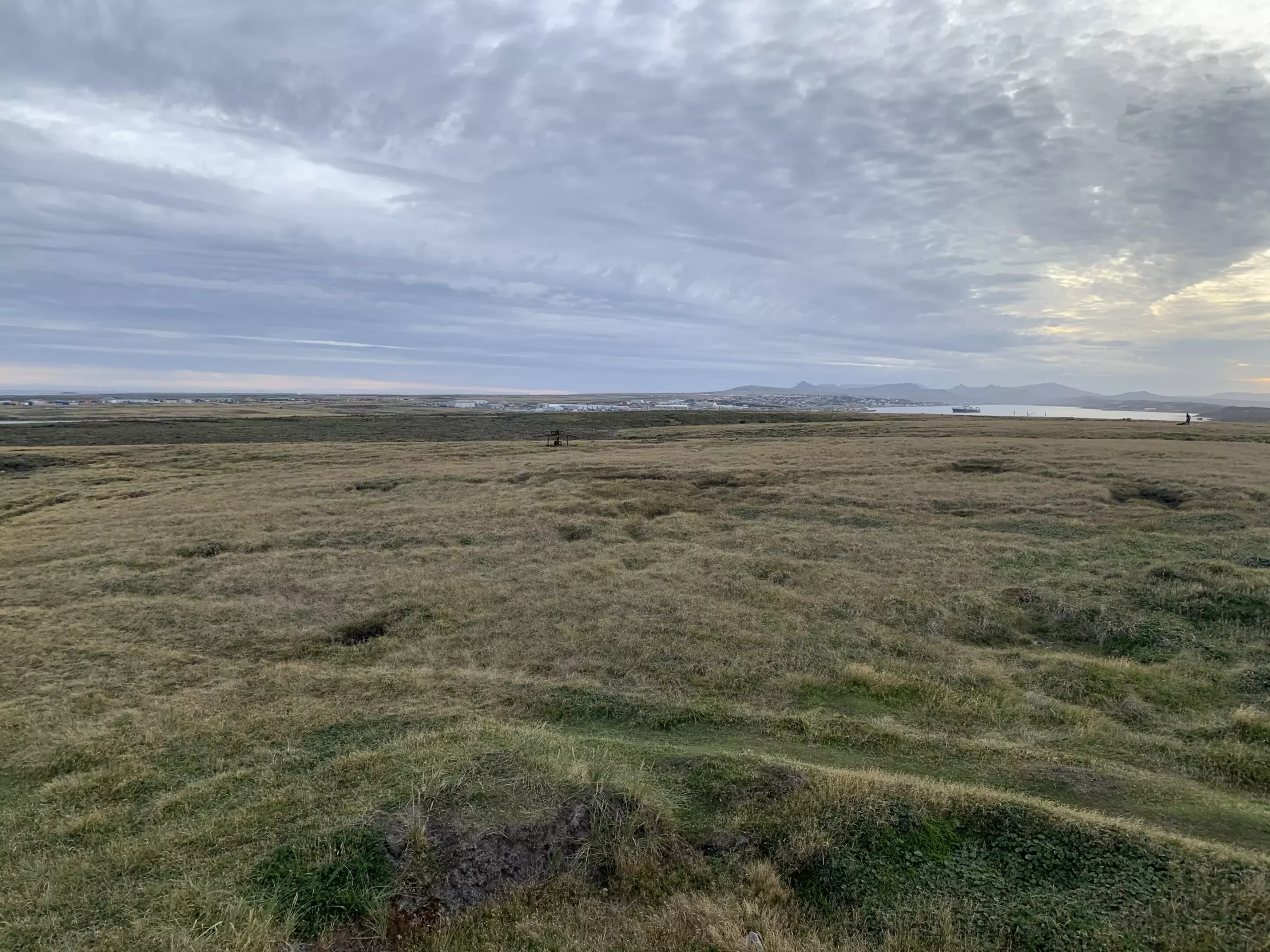New findings from a groundbreaking research project conducted by Dr. Zoë Thomas and her international team, based at the University of Southampton in the United Kingdom, have revealed a fascinating chapter in the environmental history of the Falkland Islands. Once recognized for its stark, treeless landscape, this South Atlantic archipelago harbored a lush, verdant rainforest as recently as 30 million years ago. This surprising revelation is chronicled in the latest edition of the journal Antarctic Science, offering a glimpse into the region’s dramatically different climatic past.
The investigation was sparked by serendipitous conversations among researchers, residents, and builders in Port Stanley, the capital of the Falklands. It was during an unrelated project that Dr. Thomas learned from local contacts about ancient remnants unearthed during construction activity. Specifically, builders at a site designated for a new care home had unknowingly disrupted layers of ancient peat, revealing an astonishing array of well-preserved tree trunks and branches. The state of preservation was so remarkable that they appeared to have been buried mere days prior, despite being millions of years old.
The layers of peat that were disturbed during construction provided a unique opportunity for scientific inquiry. Dr. Thomas elaborates on the bizarre situation: the Falkland Islands, for ages recognized as hostile terrain for tree growth due to harsh wind conditions and highly acidic soils, presented a puzzlement. How could such a vibrant ecosystem have existed here when the current environment starkly contrasts with this ancient habitat?
Together with the South Atlantic Environmental Research Institute (SAERI), Dr. Thomas and her team meticulously collected samples and prepared them for rigorous examination at the University of New South Wales in Australia. Within the lab, researchers utilized advanced scanning electron microscopes to conduct a detailed analysis of both the wood and the embedded pollen. Traditional methods such as radiocarbon dating were ineffectual due to the advanced age of the materials, compelling scientists to rely on the study of pollen spores sealed within the same geological layers.
These investigations ultimately determined a timeline for the ancient woodland, placing its origins between 15 and 30 million years ago. This era represented a climate notably warmer and more humid than what the Falklands experience today, fostering an environment capable of sustaining trees—something the current ecosystems cannot support.
The implications of this research paint an extraordinary image of the Falklands’ past. The rainforest that once thrived on these islands bore resemblance to the modern-day forest ecosystems found in Tierra del Fuego at the southern tip of South America. However, the Falkland rainforest was not tropical; instead, it would have been characterized by cooler weather patterns, hosting a diverse array of flora and fauna that have long since vanished.
Many of the tree species identified from the Tussac House samples are now extinct, but they likely dispersed to the islands via prevailing westerly winds from the larger forests that predominated across the Southern Hemisphere, including those on the South American mainland. This points to a previously interconnected biosphere, with species capable of coping with varying climatic conditions.
While the exact causes for the extinction of this rich rainforest remain speculative, it is reasonable to attribute it to significant climatic shifts leading to increasingly cold, dry conditions that ultimately transformed the landscape into the peat-dominated terrains seen today.
Dr. Thomas expresses deep appreciation for the collaborative spirit of the Falklands’ residents, recognizing that without their keen observation and willingness to share information, the discovery of the ancient forest might have gone unnoticed. Such engagements highlight the vital role local communities play in advancing scientific knowledge. The researchers’ success in uncovering these exquisite relics serves as a testimony to the importance of community input in scientific exploration.
Looking ahead, this remarkable finding opens avenues for further research initiatives. It invites scientists to continue exploring the layers of history embedded beneath the Falkland Islands’ surface. By studying these pristine samples, scientists can better understand not only the details of the ancient environments but also the potential climatic changes that might affect contemporary ecosystems.
The Falkland Islands would thus not be merely a landscape of windswept grasslands but rather a treasure trove of ecological history waiting to be unveiled, enriching our understanding of Earth’s climatic evolution and species adaptation. In this way, the past still has much to say about the future of our planet.


Leave a Reply